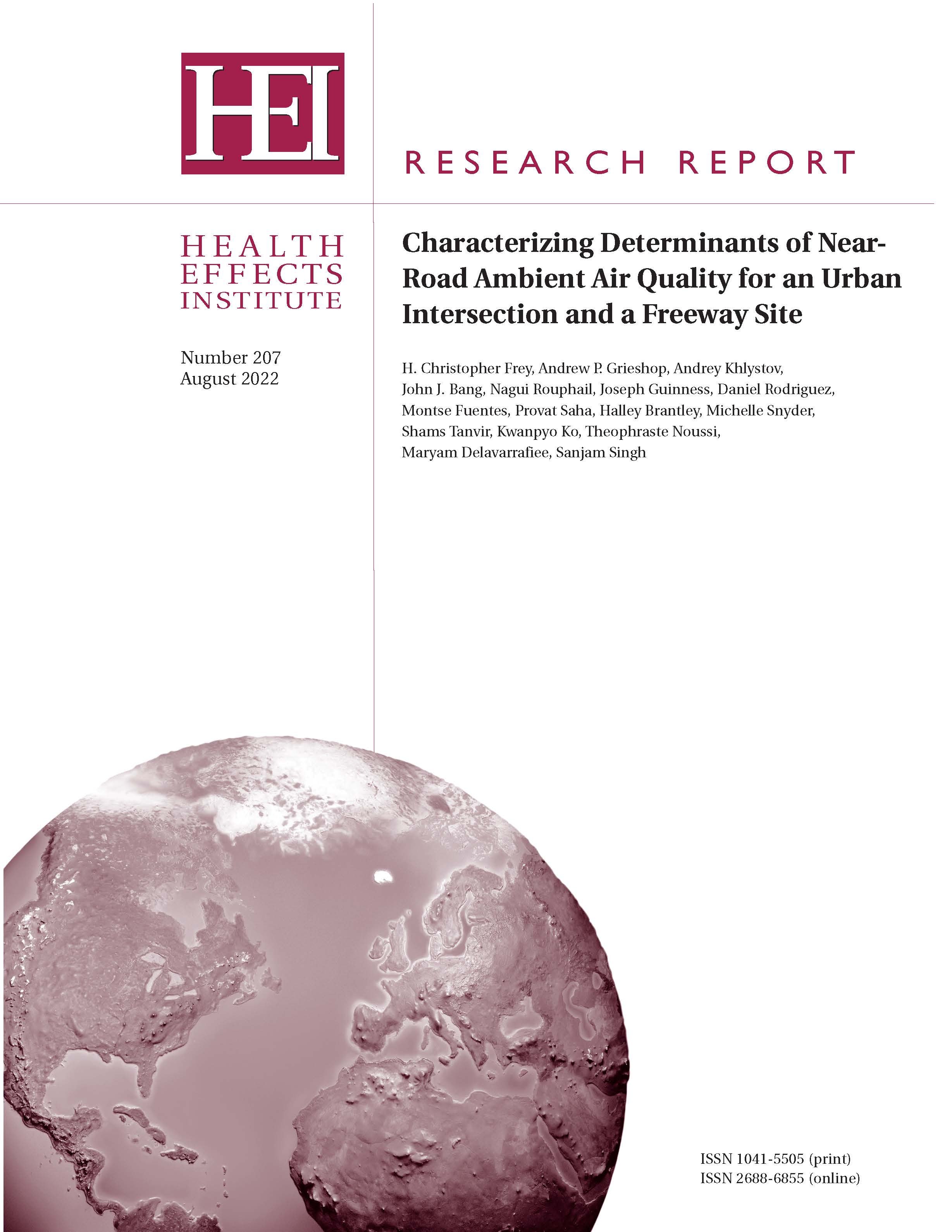You are here
Study aims to better understand air pollutant concentrations near busy roads

Exposure to traffic-related air pollution, especially at the higher levels occurring in cities, has been associated with adverse health effects such as childhood asthma, impaired lung function, and cardiovascular disease. However, assessing levels of air pollution where people live and work is challenging, because traffic-related air pollution is a complex mixture of many particulate and gaseous pollutants and varies depending on the location and time.
Models of traffic-related air pollution for use in exposure assessment for epidemiological studies may benefit from understanding traffic activity and air flow at small spatial scales within cities ― as examined in a new HEI study led by H. Christopher Frey of North Carolina State University in Raleigh.
As discussed in Research Report 207, Characterizing Determinants of Near-Road Ambient Air Quality for an Urban Intersection and a Freeway Site, Frey and his team measured six air pollutants (nitrogen oxides, ultrafine particles, black carbon, fine particles, nitrogen dioxide, and ozone) near a freeway and in an urban area. They collected detailed data on real-world motor vehicle traffic intensity, vehicle behavior (e.g., acceleration, breaking, and turning), and the resultant emissions. They developed statistical models of the air pollutant concentrations based on the other data, including parameters based on locale-specific traffic and meteorology.
In its independent evaluation, the HEI Review Committee said the study contributes a rich set of results on six air pollutants and shows that more detailed measurements can help with development of enhanced near-road air quality models in certain situations.


